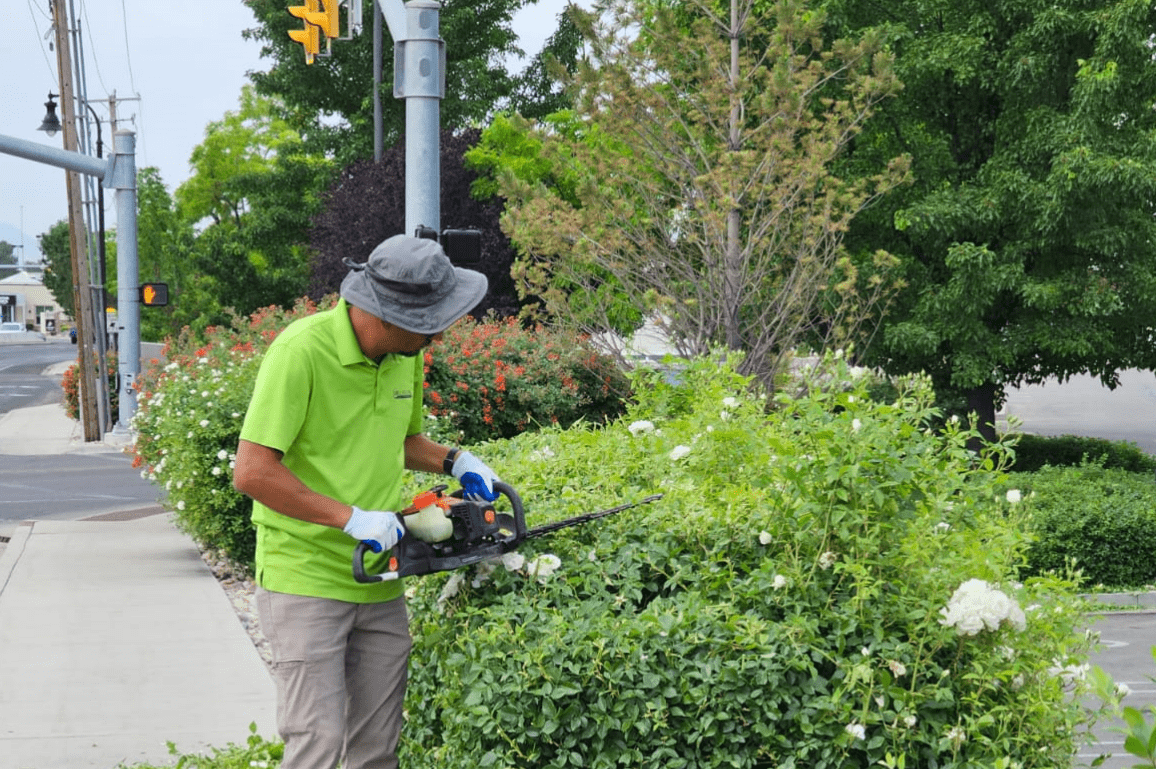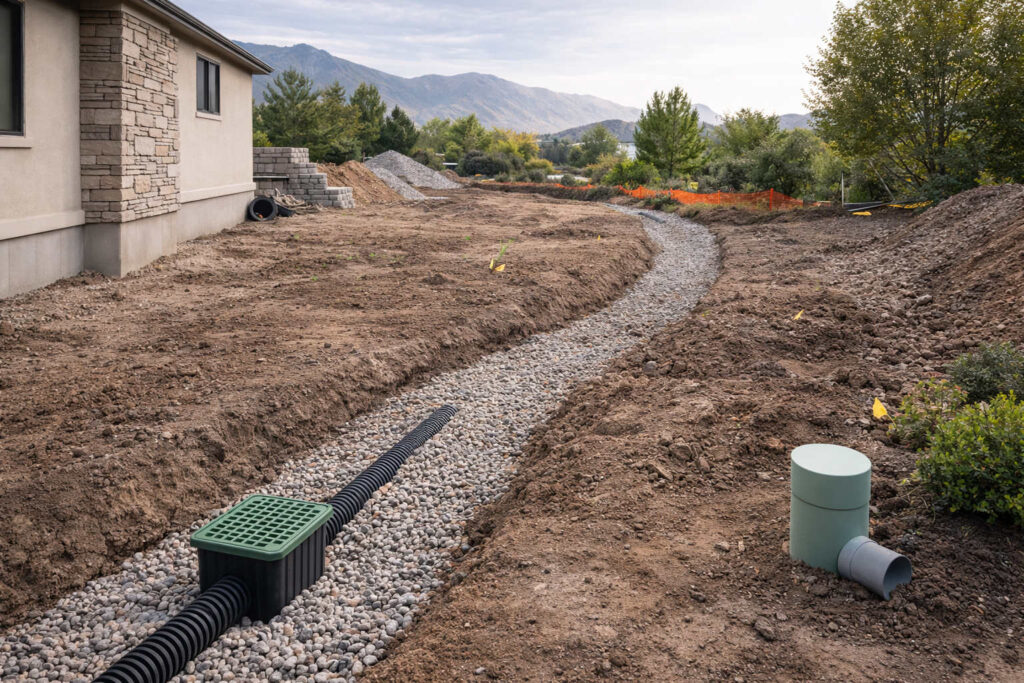Maintaining the health and appearance of commercial landscapes requires more than only regular mowing and watering. Pruning and fertilization are critical components of landscape care that promote healthy growth, prevent disease, and enhance the overall aesthetic of your property. In this comprehensive guide, we will explore essential pruning and fertilization techniques for healthy commercial landscapes, offering expert tips and best practices to keep your property looking its best.
The Importance of Pruning in Commercial Landscapes Pruning is a vital practice that involves selectively removing specific parts of plants, such as branches, buds, or roots. Proper pruning techniques are essential for maintaining plant health, improving structural integrity, and enhancing the visual appeal of your commercial landscape.
Benefits of Pruning
- Promotes Healthy Growth: Removing dead, diseased, or damaged branches encourages new growth and prevents the spread of disease.
- Enhances Plant Shape and Structure: Pruning helps maintain the desired shape and size of plants, ensuring they fit well within the landscape design.
- Improves Air Circulation and Sunlight Penetration: Thinning dense foliage allows for better air circulation and sunlight penetration, reducing the risk of fungal diseases.
- Increases Flower and Fruit Production: Proper pruning techniques stimulate the growth of flowers and fruit, enhancing the overall beauty and productivity of the landscape.
Essential Pruning Techniques
Understanding Pruning Types There are several types of pruning, each with specific purposes:
- Thinning: Removing selected branches to reduce density and improve light penetration and air circulation.
- Heading: Cutting back the terminal portion of a branch to encourage lateral growth and a bushier appearance.
- Shearing: Trimming plants into a specific shape or form, often used for hedges and topiaries.
- Rejuvenation: Cutting back plants to the ground or to main branches to stimulate vigorous new growth.
Pruning Tools and Equipment Using the right tools is essential for effective pruning:
- Hand Pruners: Ideal for small branches and precise cuts.
- Loppers: Suitable for thicker branches up to 2 inches in diameter.
- Pruning Saws: Designed for cutting larger branches and limbs.
- Hedge Trimmers: Useful for shaping hedges and shrubs.
Pruning Best Practices
- Prune at the Right Time: Timing is crucial for effective pruning. For most plants, late winter or early spring is the best time to prune before new growth begins.
- Make Clean Cuts: Use sharp, clean tools to make precise cuts just above a bud or branch node.
- Avoid Over-Pruning: Removing too much foliage at once can stress plants and inhibit growth. Aim to remove no more than 25% of a plant’s canopy in a single pruning session.
- Disinfect Tools: Clean pruning tools between cuts, especially when dealing with diseased plants, to prevent the spread of pathogens.
The Importance of Fertilization in Commercial Landscapes Fertilization provides essential nutrients that plants need to thrive. Proper fertilization techniques promote healthy growth, enhance flowering and fruiting, and improve the overall vigor of your commercial landscape.
Benefits of Fertilization
- Supports Plant Health: Nutrients like nitrogen, phosphorus, and potassium are vital for plant growth and development.
- Enhances Soil Fertility: Fertilizers improve soil structure and nutrient availability, creating a more favorable environment for plant roots.
- Boosts Flower and Fruit Production: Adequate fertilization stimulates the growth of flowers and fruit, adding to the landscape’s aesthetic appeal.
- Increases Disease Resistance: Well-fertilized plants are more resilient to pests and diseases, reducing the need for chemical treatments.
Essential Fertilization Techniques
Choosing the Right Fertilizer Selecting the appropriate fertilizer is crucial for meeting the specific needs of your plants:
- Balanced Fertilizers: Contain equal amounts of nitrogen (N), phosphorus (P), and potassium (K), such as 10-10-10.
- Specialty Fertilizers: Formulated for specific plant types or growth stages, such as bloom boosters or slow-release fertilizers.
- Organic Fertilizers: Made from natural materials, such as compost, manure, or bone meal, providing a sustainable nutrient source.
Fertilization Best Practices
- Soil Testing: Conduct soil tests to determine nutrient levels and deficiencies. This information helps you choose the right fertilizer and application rates.
- Follow Application Guidelines: Adhere to the manufacturer’s instructions for application rates and methods to avoid over-fertilization.
- Apply at the Right Time: Fertilize during the growing season when plants are actively growing. For most plants, early spring and late fall are ideal times for fertilization.
- Water After Application: Watering after fertilization helps dissolve the nutrients and promotes their absorption by plant roots.
Combining Pruning and Fertilization for Optimal Results Integrating pruning and fertilization practices creates a synergistic effect, enhancing plant health and landscape beauty. Here are some tips for combining these techniques effectively:
Timing and Coordination
- Prune Before Fertilizing: Pruning first removes dead or damaged parts, allowing the plant to focus energy on new growth. Follow up with fertilization to support this growth.
- Seasonal Planning: Develop a seasonal maintenance schedule that includes both pruning and fertilization tasks. Adjust the schedule based on plant needs and environmental conditions.
Monitor Plant Health Regularly assess the health and growth of your plants. Look for signs of nutrient deficiencies, such as yellowing leaves or stunted growth, and adjust your fertilization practices accordingly. Likewise, observe plant structure and form to determine when pruning is needed.
Professional Lawn Care Services Consider hiring professional lawn care services for expert pruning and fertilization. Professionals have the knowledge, experience, and equipment to handle these tasks effectively, ensuring optimal results for your commercial landscape.
Proper pruning and fertilization are essential for maintaining healthy, vibrant commercial landscapes. By following the essential techniques and best practices outlined in this guide, you can promote robust plant growth, prevent disease, and enhance the overall appearance of your property. Regular care and attention to detail will ensure your landscape remains attractive and welcoming year-round.
”);



